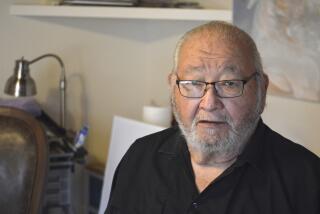‘The Boy Who Harnessed the Wind’ by William Kamkwamba and Bryan Mealer
The Boy Who
Harnessed the Wind
William Kamkwamba
and Bryan Mealer
William Morrow: 348 pp., $25.99
William Kamkwamba grew up in Malawi, the son of a maize and tobacco farmer. Their house had no electricity or plumbing. In William’s village, high costs and frequent power outages made electricity hardly worth the effort. In 2002, flooding, famine and the high costs of fertilizer forced William’s family to take him out of school -- they could no longer afford the annual tuition of $80.
William discovered the local library. Fascinated by how things worked (he and his friend fixed radios for villagers), he checked out “Explaining Physics,” “Using Energy” and other science textbooks. Using scrap metal, a tractor fan, ball bearings from a discarded groundnut grinder and poles from blue gum trees, William made a windmill in the family’s frontyard that powered four light bulbs and two radios. Using bicycle spokes and toggle switches made from discarded flipflops he made wall switches. William built a windmill for the schoolyard that powered a radio station and allowed students to recharge their parents’ cellphones.
In November 2006, local officials heard of his efforts and sent him to a local boarding school. His story filtered through the blogosphere, and William was invited to a conference in Tunisia held by TED, a nonprofit group encouraging interaction between the worlds of technology, education and design. Members of the TED community helped William raise money for various projects -- installing electricity in William’s village, digging wells, installing solar panels to supplement power input and providing batteries to store power.
“Now look at you,” William told his father after installing the wall switches in the family home, “enjoying electricity like a city person!”
“Oh,” his father said. “Enjoying it more than a city person.”
“You mean because there’s no blackouts and you owe [the power company] nothing?”
“Well, yes,” his father said, “but also, because my own son made it.”
The Beautiful Soul
of John Woolman,
Apostle of Abolition
Thomas P. Slaughter
Hill & Wang: 450 pp., $22 paper
John Woolman should be more familiar to us, this remarkable mystical activist, child of Quaker farmers in New Jersey. Woolman was born in 1720. His writings and efforts to abolish slavery, his frugal, modest lifestyle, his rejection of greed and consumption and his willingness to live by his principles -- refusing to travel on the backs of animals or wear clothing dyed by slaves or use any products that involved slavery or cruelty -- earned him the respect of poets and thinkers through the centuries. William James, in “The Varieties of Religious Experience,” called him a saint. John Greenleaf Whittier called him a founding father of the abolitionist movement. Woolman’s “Journal” was published in 1774 and has been reissued many times since, giving it the longest publishing life (except for the Bible) in American history.
There are a few previously published biographies, but Slaughter’s is by far the most comprehensive, including many fascinating passages about Woolman’s dreams. Slaughter is clearly interested in Woolman’s brand of mysticism; the author walks the line between “hagiography and psychological reductionism,” and there is much to learn here about the spiritual culture of the still-New World as well as the spiritual growth of this remarkable man.
The Delicacy
and Strength of Lace
Letters by Leslie Marmon Silko
& James Wright
Edited by Anne Wright
Graywolf: 102 pp., $14
Leslie Marmon Silko and James Wright met at a writers’ conference in 1975 in Michigan. Wright wrote to Silko three years later, telling her how much he liked her book “Ceremony.” Silko wrote back with stories of her Laguna family in Arizona and New Mexico; of the rooster in her frontyard, her horses and the western landscape. Wright, who lived in New York with his wife, Anne (who edited this book), spent a year traveling in Europe and sent Silko letters from France and Italy.
After a few exchanges, Silko began writing delicately about her divorce and the custody battle that left her missing her young children. Wright wrote to her about his own divorce and the son he felt he’d lost in the process. They sent each other work and wrote about passages in the work that deeply affected them -- the best kind of literary criticism.
There is a gentleness in their correspondence that seems otherworldly and beautiful. They met one more time, on Wright’s deathbed in a New York hospital where he was dying of cancer.
Their brief correspondence, from 1978 to 1980, is a testament to the power of words to form bonds between the writers. “I treasure the words you write,” Silko wrote in a letter to Wright that arrived after his death. “Your name most of all. But no matter if written words are seldom because we know, Jim, we know.”
More to Read
The biggest entertainment stories
Get our big stories about Hollywood, film, television, music, arts, culture and more right in your inbox as soon as they publish.
You may occasionally receive promotional content from the Los Angeles Times.






